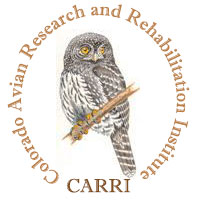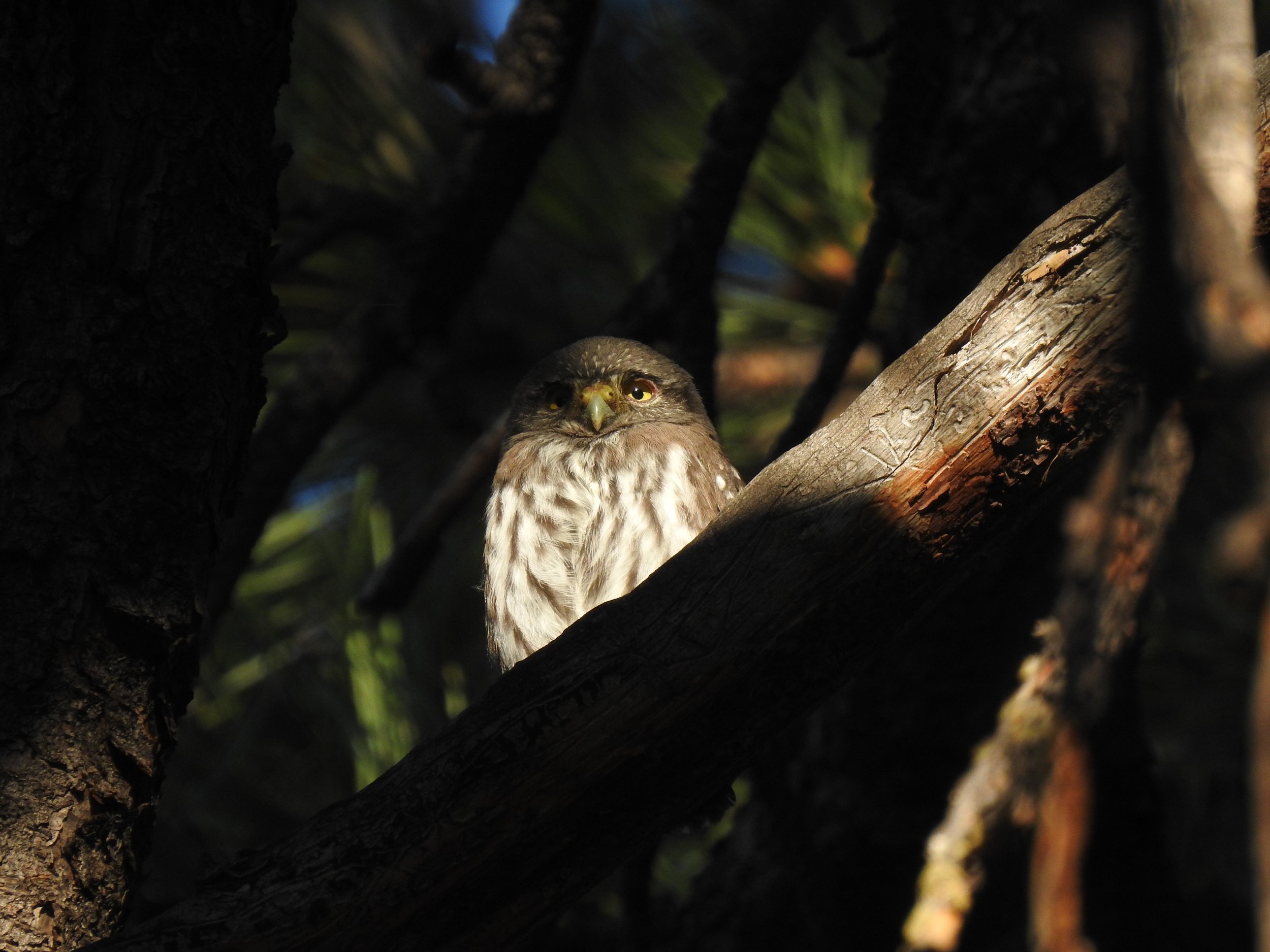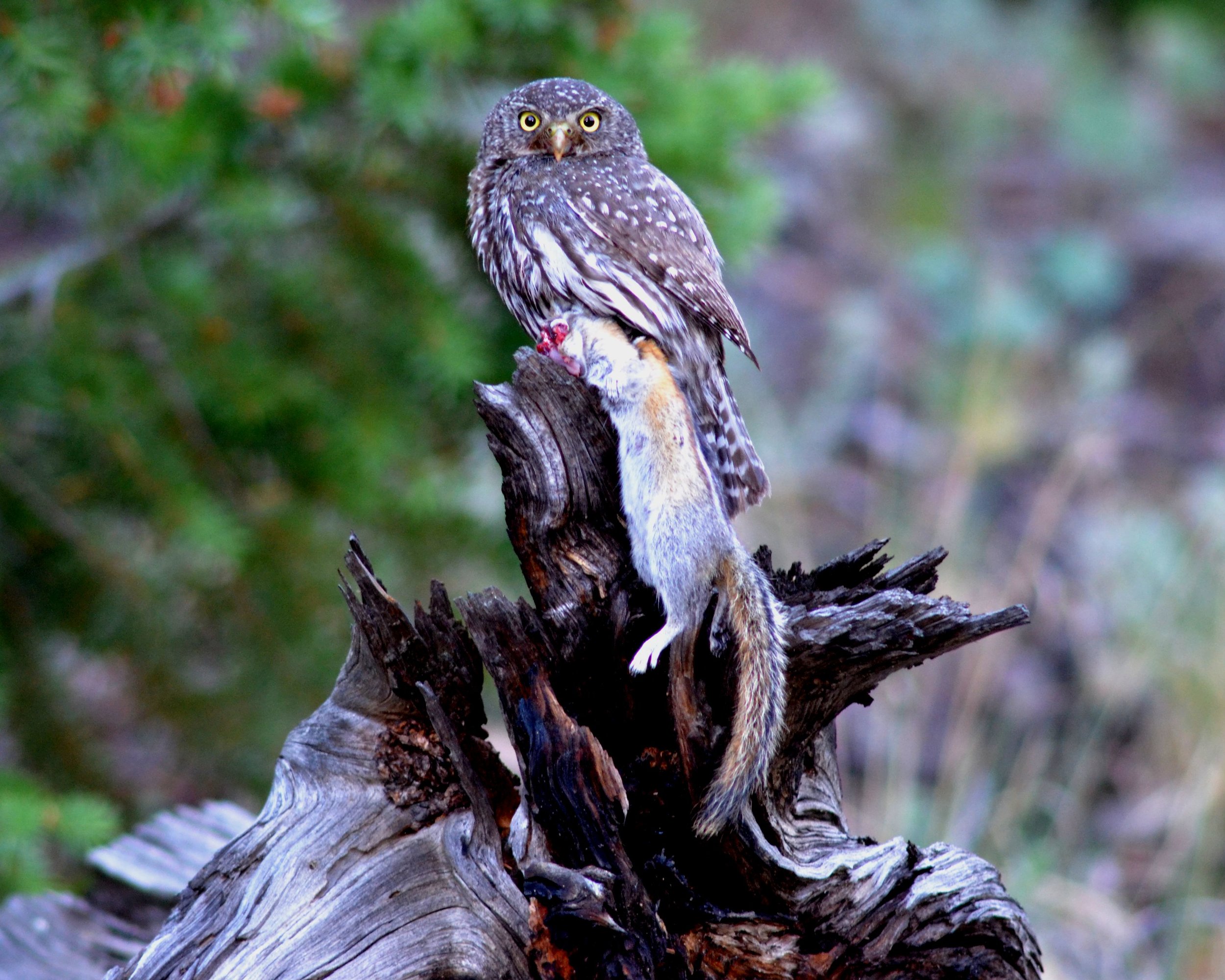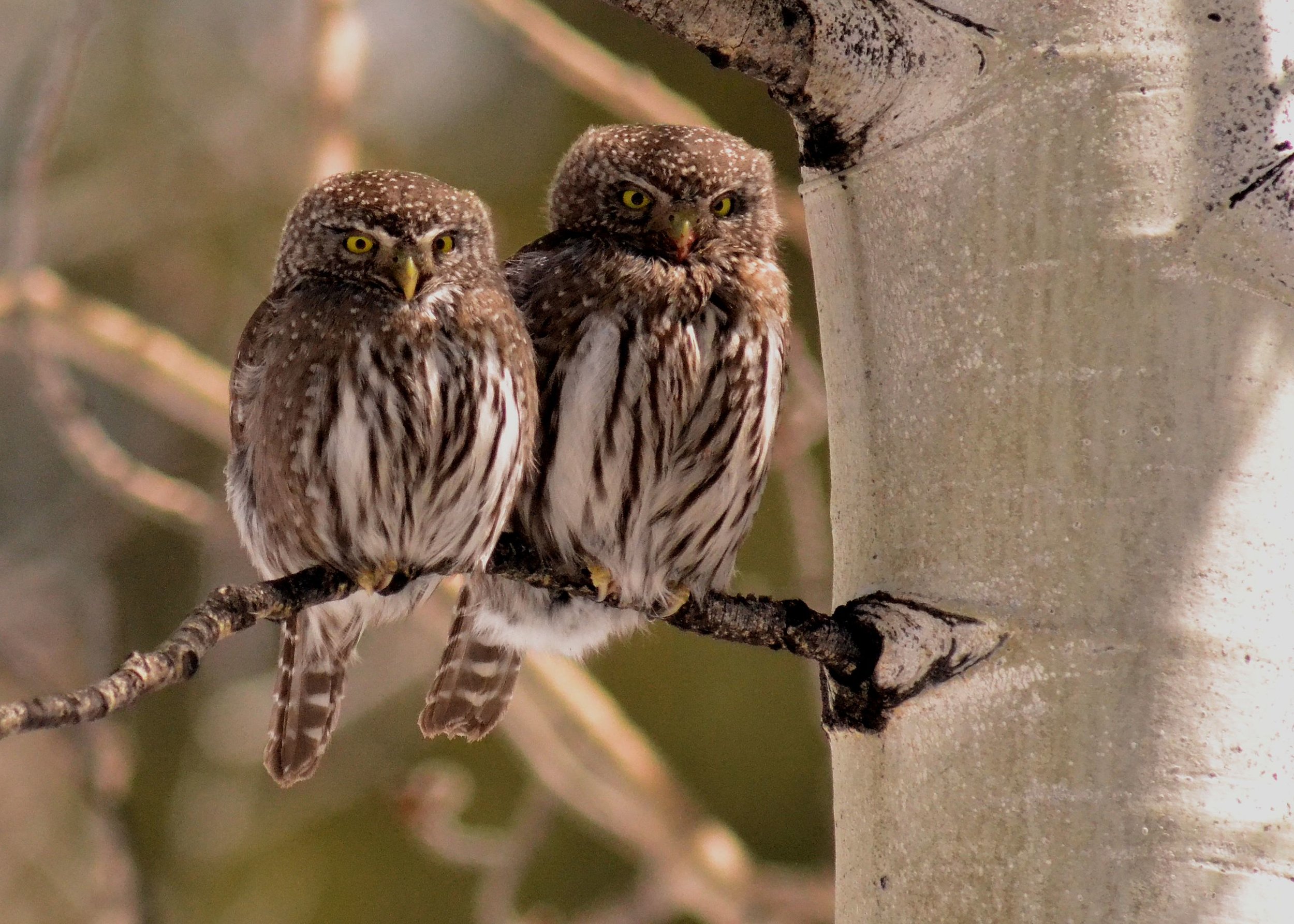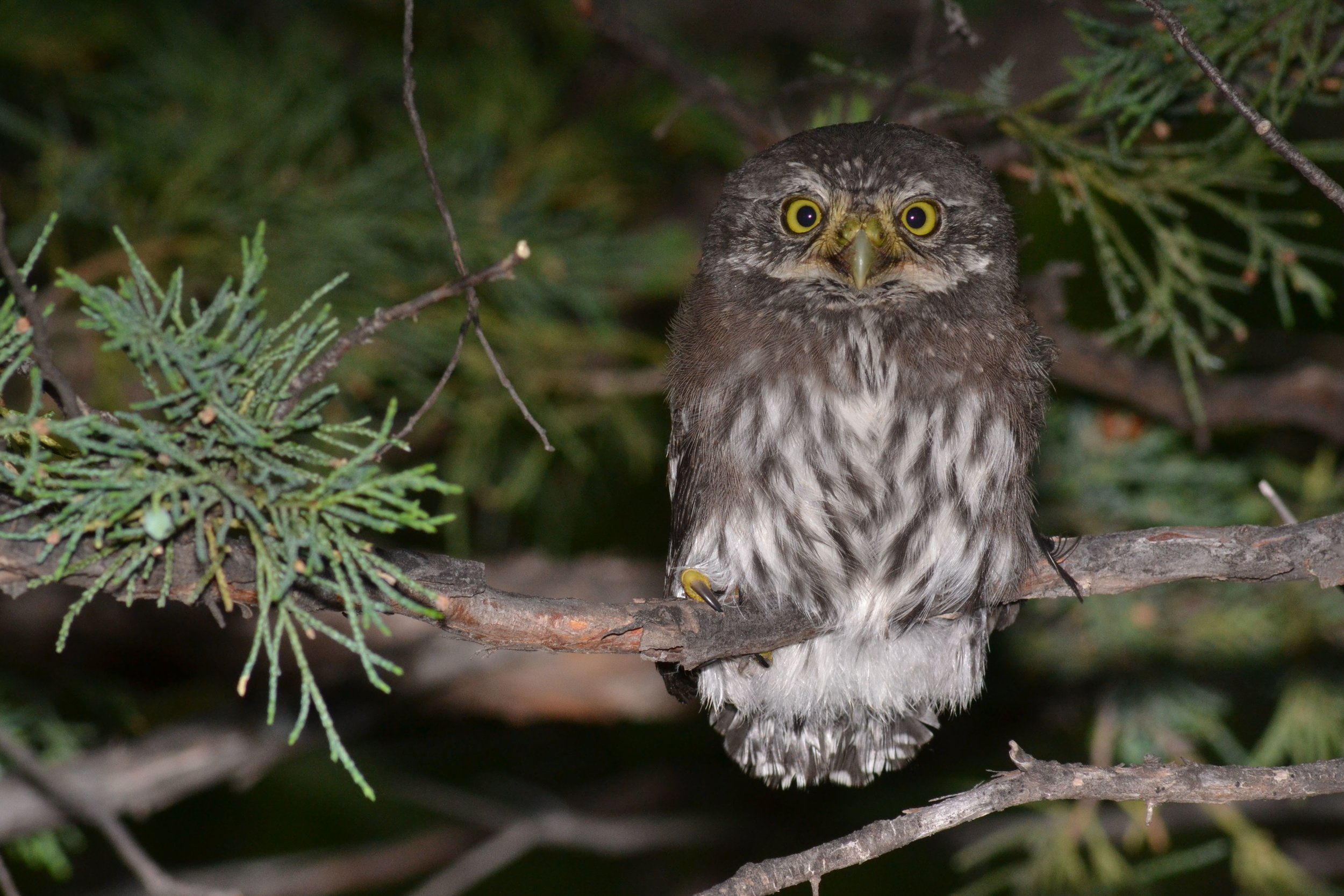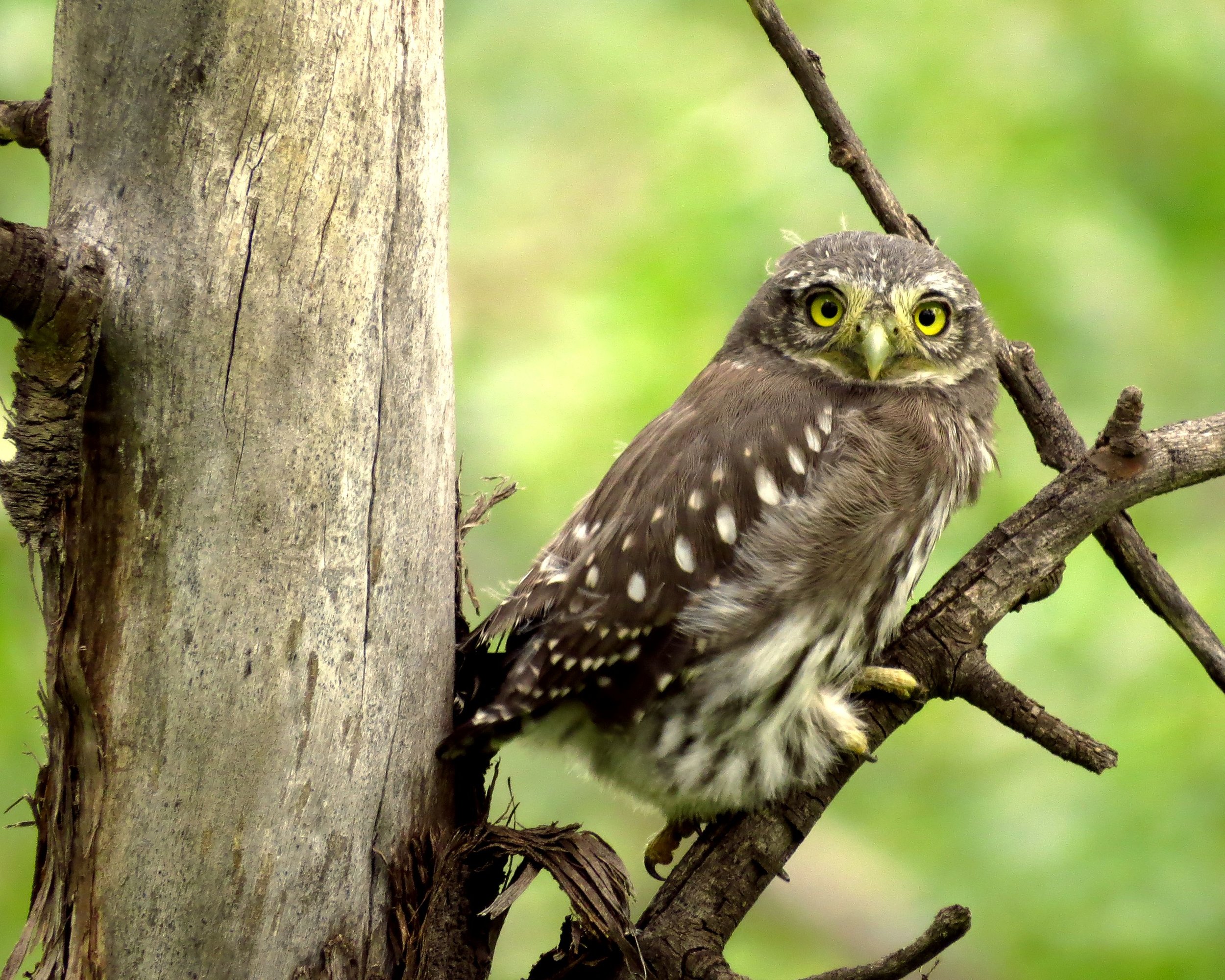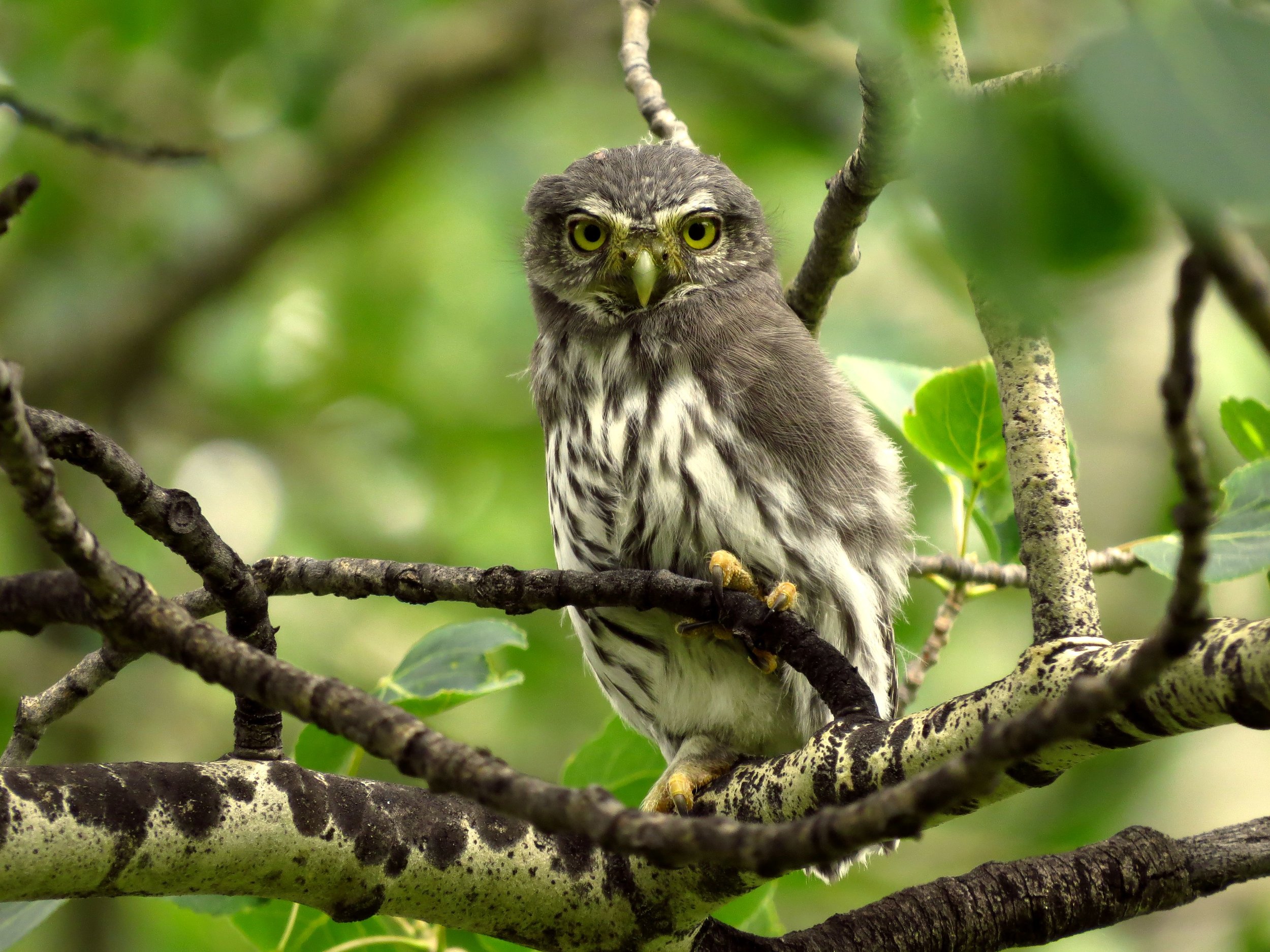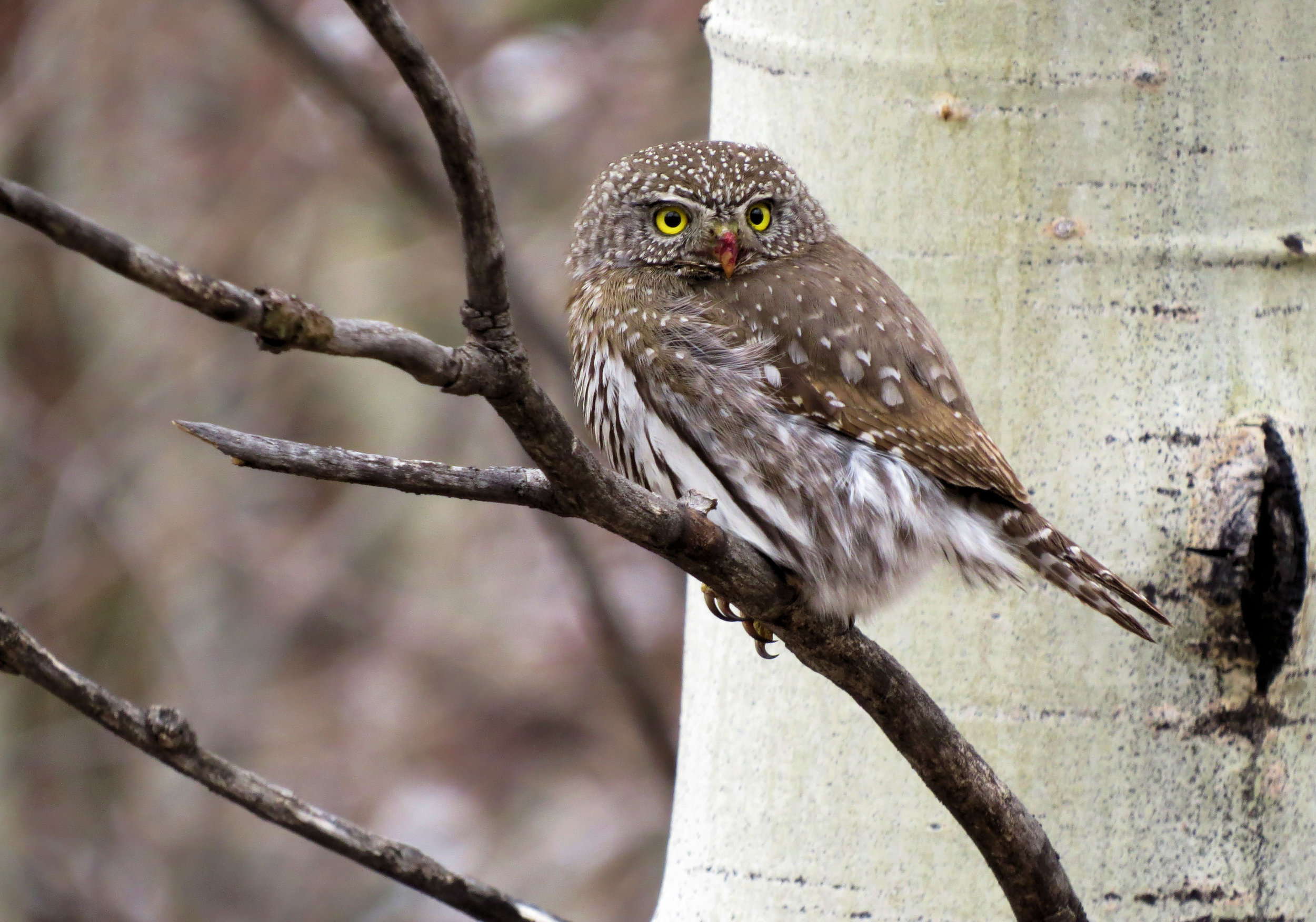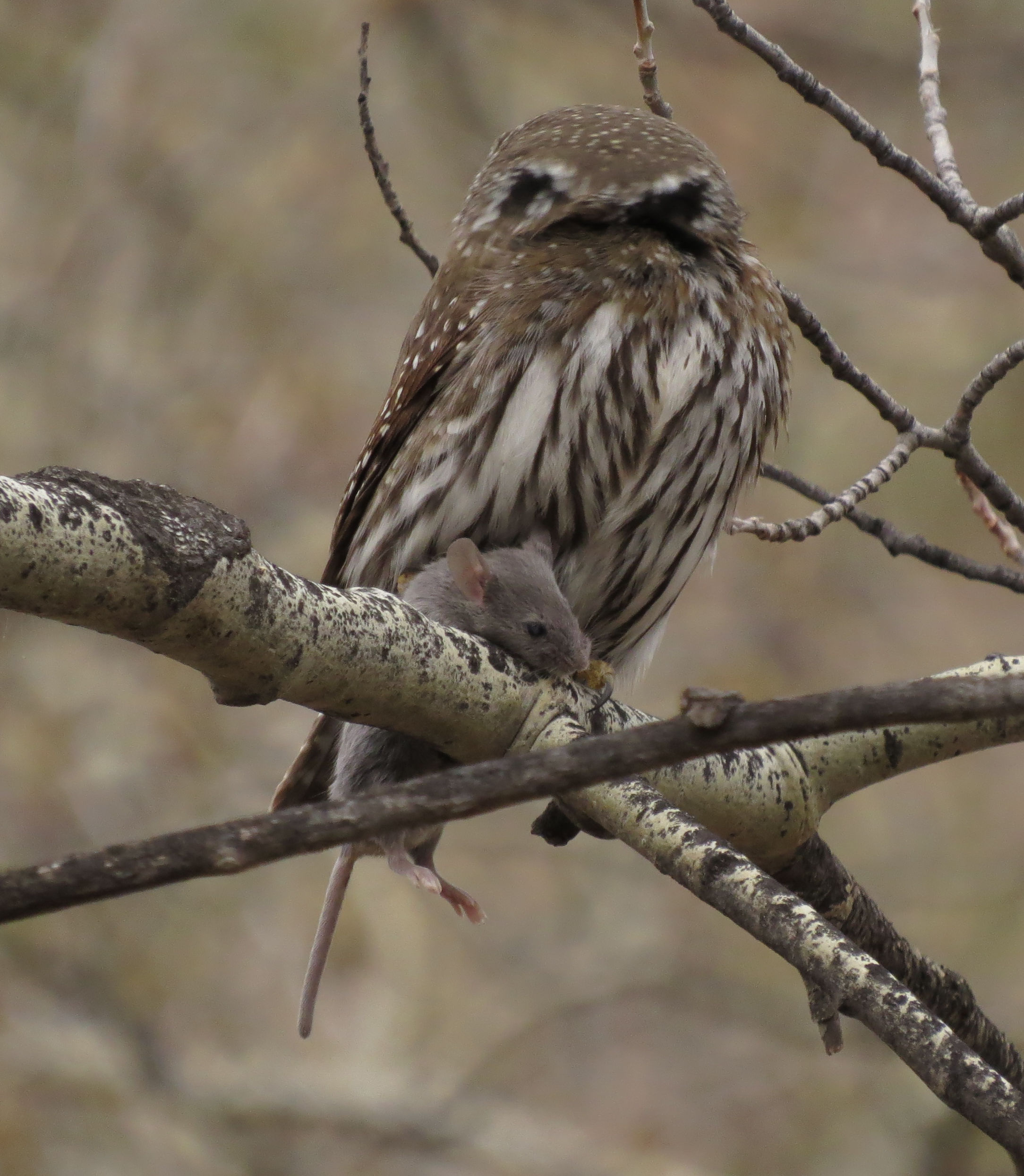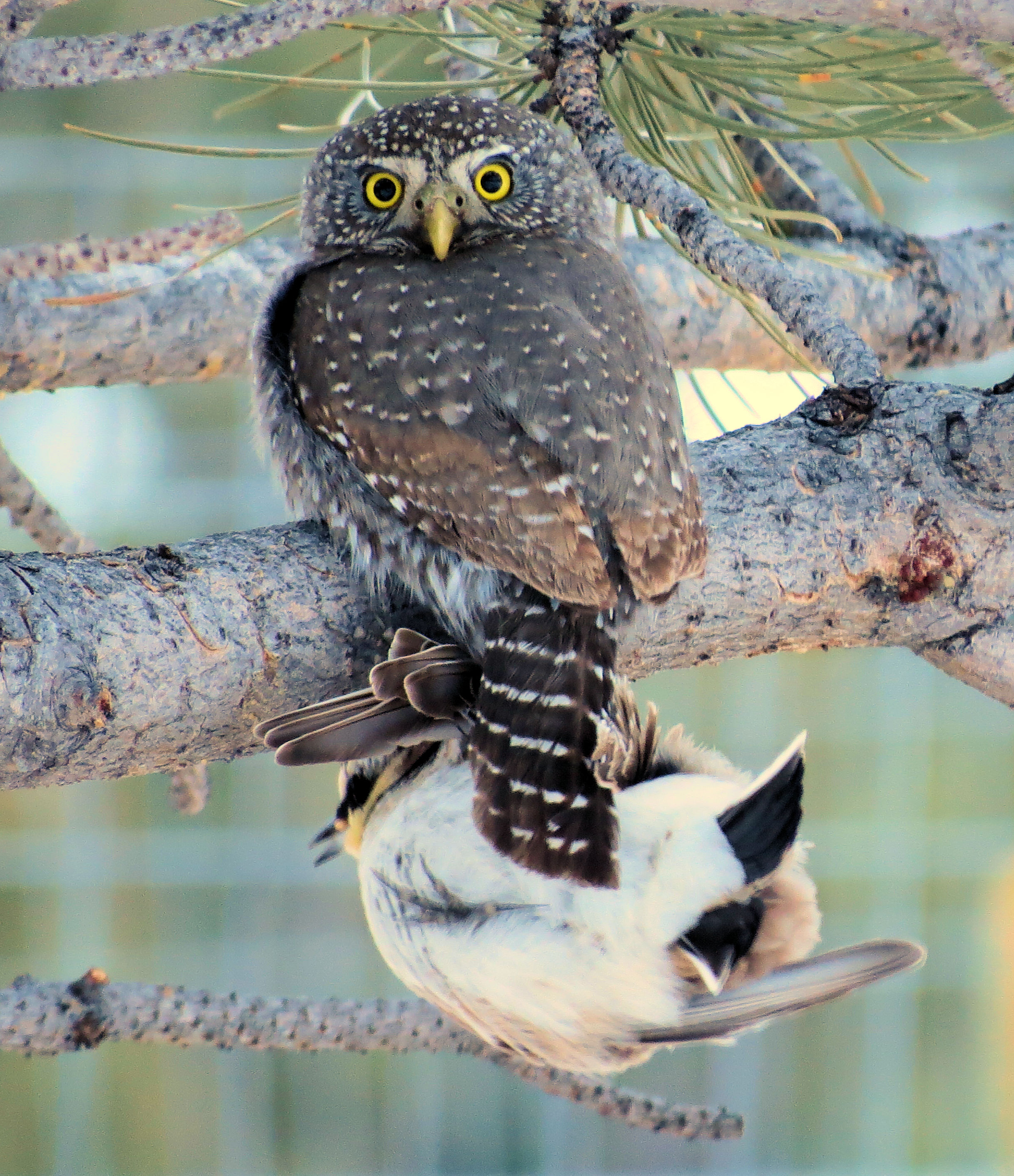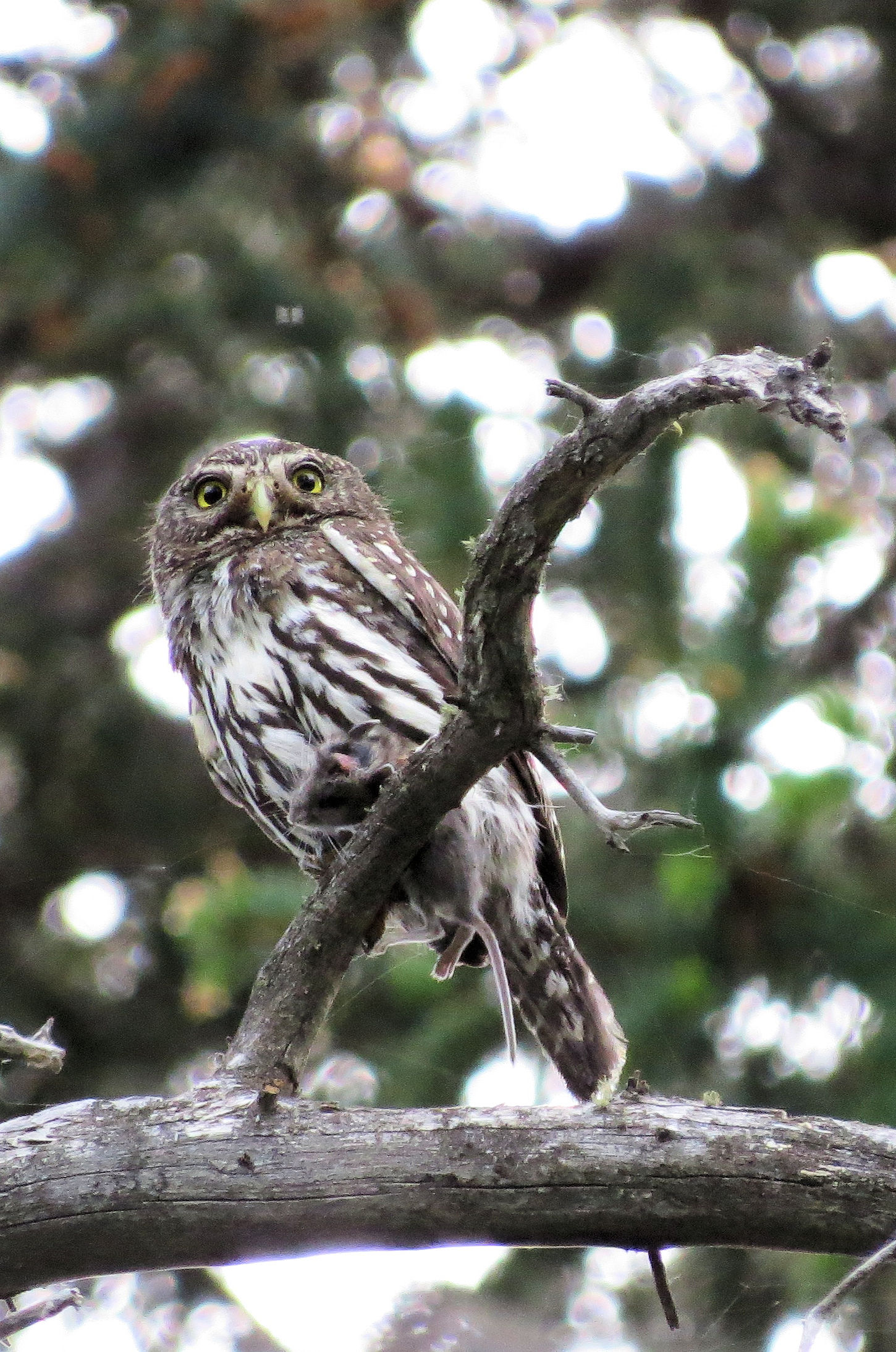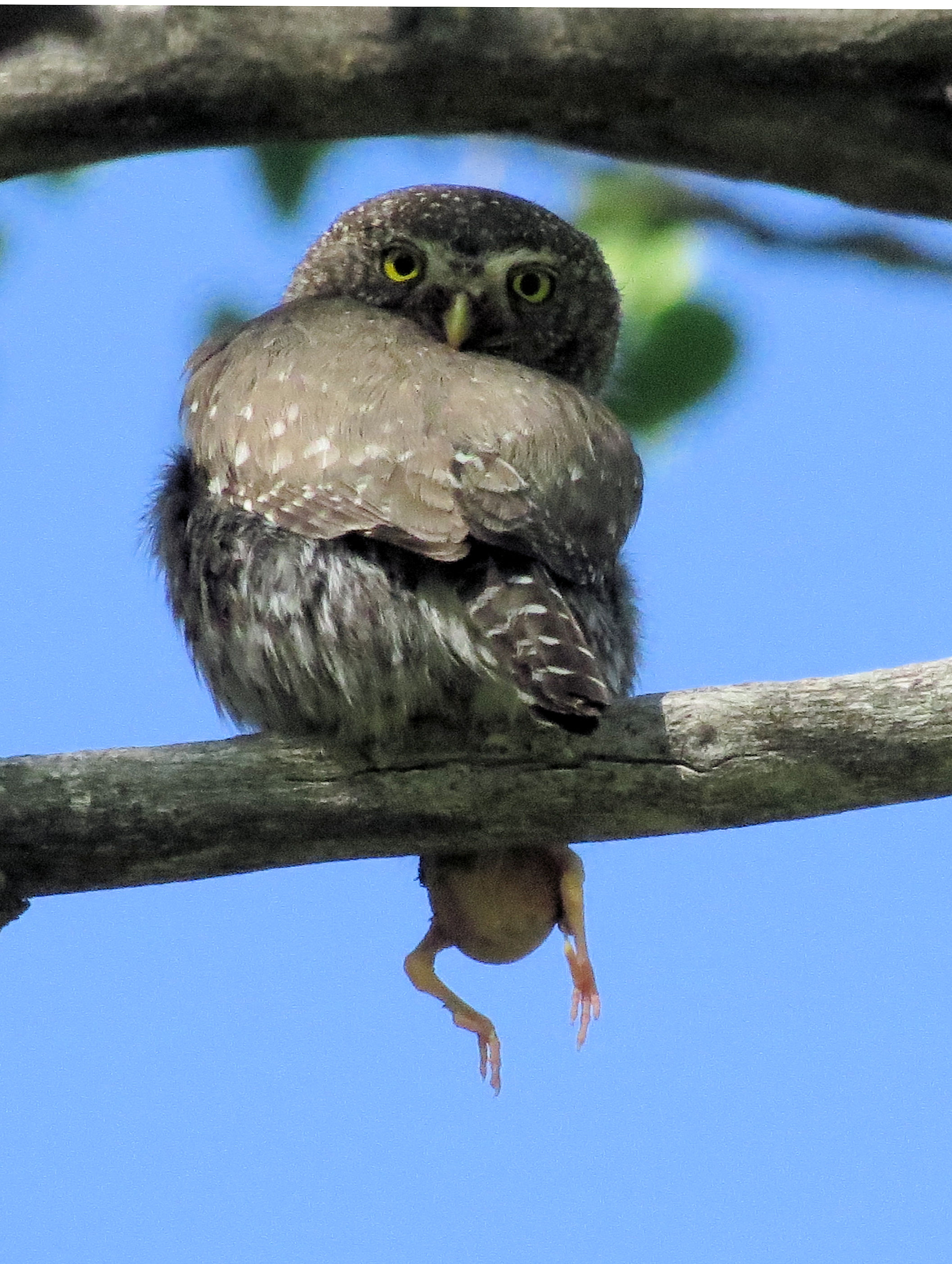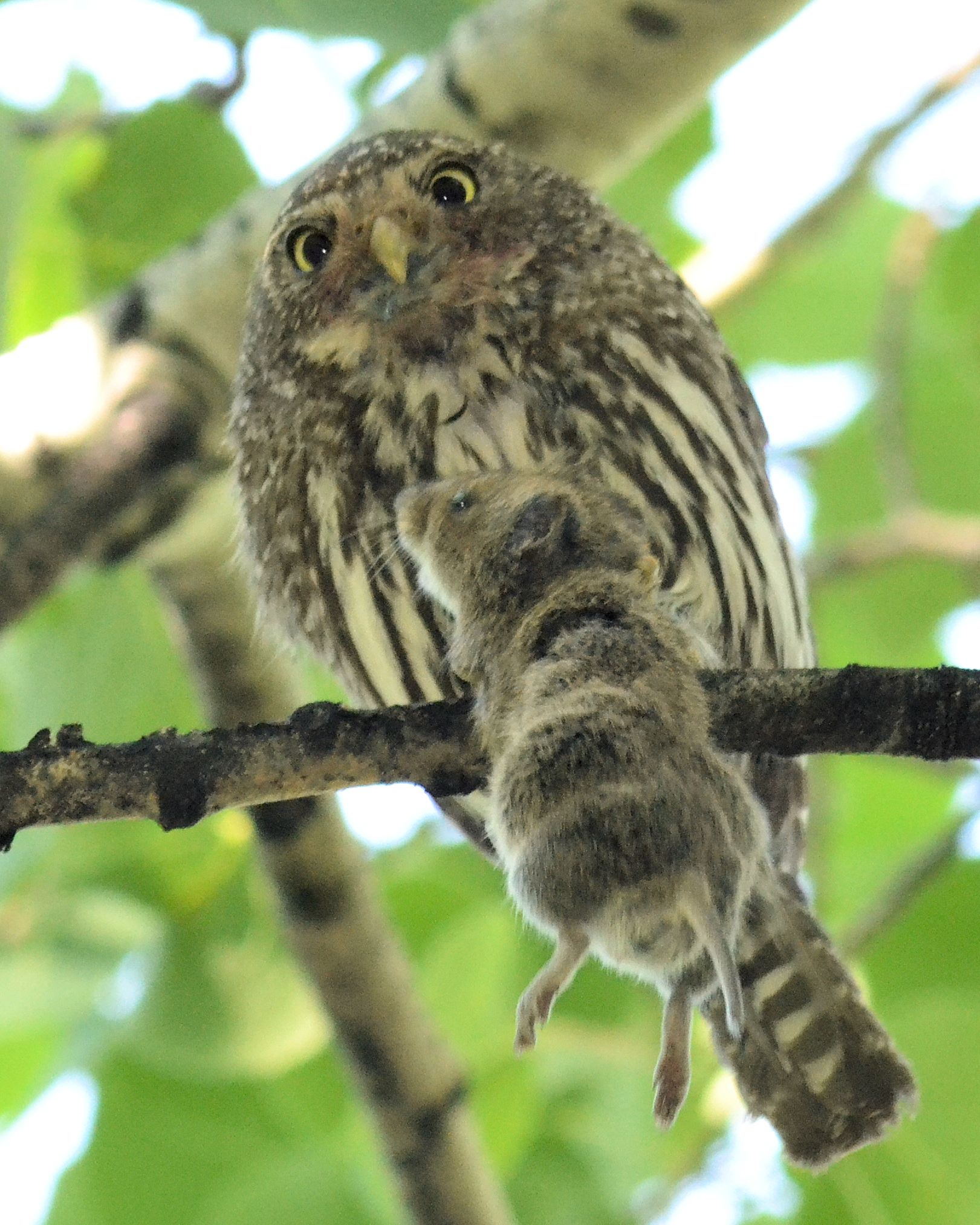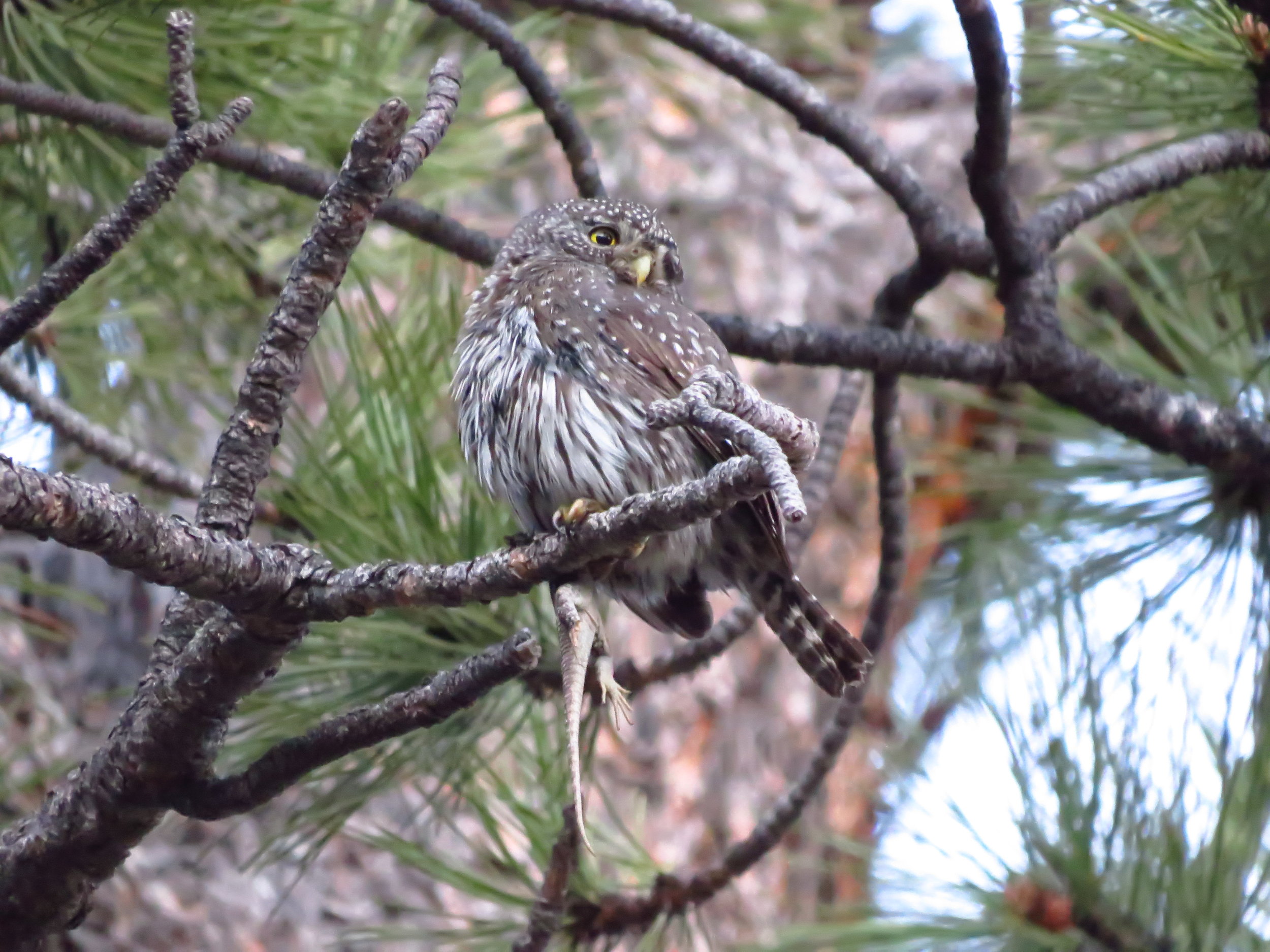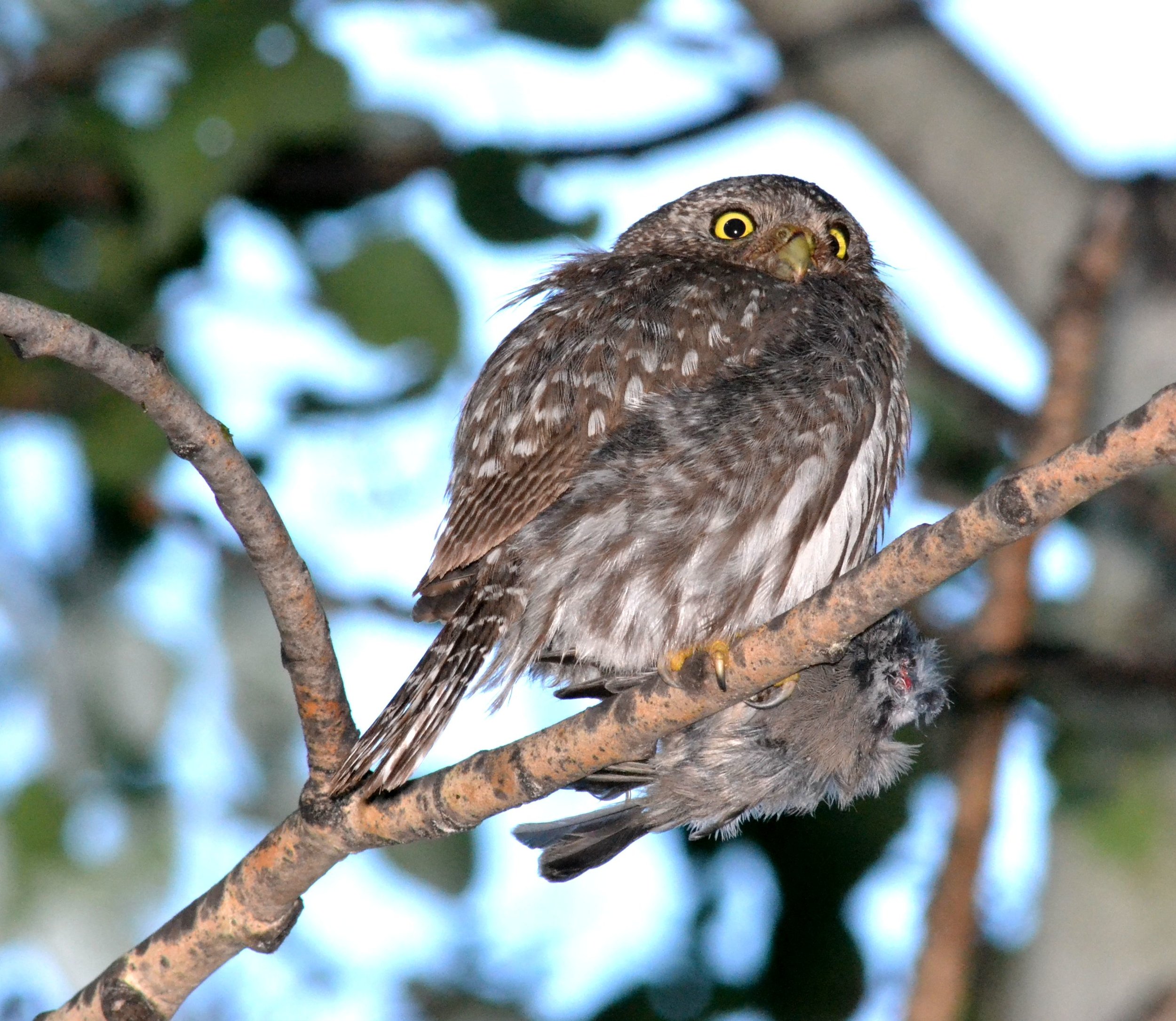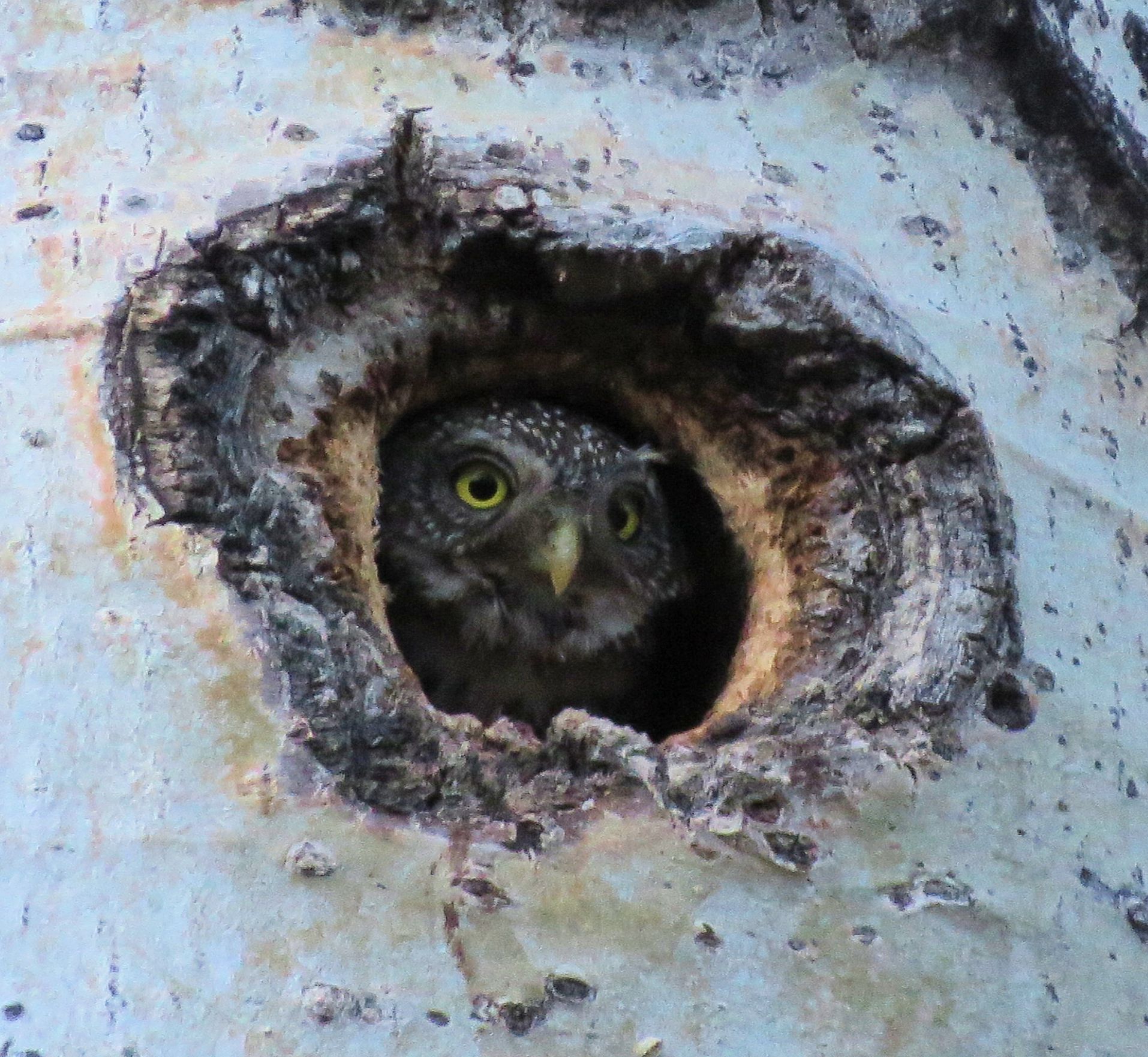The Northern Pygmy-Owl is one of the smallest owls in North America and the smallest found in Colorado. It is roughly 7 inches (17.78 cm) from head-to-tail and weighs, on average, about 70 grams (roughly 2 oz.). They nest in the forested mountains of the west and have a specialized habitat preference.
These tiny owls are found in wooded areas composed of aspen, Douglas fir, ponderous pine, junipers, downed logs, a water source of some kind, and openings in the forest where the adults can hunt for small mammals and birds.
Northern Pygmy-Owls in this area prey heavily upon voles, chipmunks, small to medium-sized birds and even insects. Courtship begins in mid-February, with the male soliciting a female. The female begins incubation in late April to early May. Incubation lasts about 28 days. We can always tell when the eggs have hatched, because, prior to the eggs hatching, the female consumes all of her food away from the nest. After the eggs have hatched, the female begins bringing food into the nest. Therefore, the first day she brings food into the cavity is the day the eggs hatched.
In most cases, the first chick fledges about 30 days after hatching. If there are two owlets (baby owls), they most often, both fledge the same day. If there are three, or more owlets, one often fledges the first day with the other two frequently fledge the following day. If there are five (rarely) owlets, they fledge over a three or four-day period.
Northern Pygmy-Owlets tend to fledge just after sunrise. Once out of their nests, the owlets remain with the adults for three to four weeks before moving out on their own.
This video shows an attack by a Northern Pygmy-Owl. It was recorded by Tom Bradley.
Through CARRI's Northern Pygmy-Owl research, we have documented some fascinating information about these tiny predator
1) Northern Pygmy-Owlets are independent from their parents at about 4 weeks post fledging.
2) Some research suggests that Northern Pygmy-Owls prey chiefly upon insects, yet we find them preying mostly upon animals such as voles and chipmunks and birds from hummingbirds to woodpeckers, finches, sparrows and warblers.
3) Northern Pygmy-Owls prefer nesting in cavities excavated by Northern Flickers in Aspen trees.
4) Northern Pygmy-Owls nest in cavities as low as 11 feet (3.352 m) from the ground and as high as 40 feet (12.192 m), or more, off the ground.
5) Northern Pygmy-Owls have different hunting techniques when hunting birds versus animals.
6) Northern Pygmy-Owls false eye spots seem to act to deter potential predators from attacking the birds from behind, as the predators don't really know what direction the owl is looking. Predators don't like to attack prey that sees them approach as this often means the prey will out run/fly the predator and the predator does not catch a meal.
7) Northern Pygmy Owls do not have a silent flight. they sound similar to a woodpecker in flight.
Below are some photos of Northern Pygmy-Owls with a variety of prey items.
A Horned Lark, Deer Mouse, nestling American Robin, Vole, Lizard, Chipmunk, Gray-headed Junco, and Mountain Chickadee.
